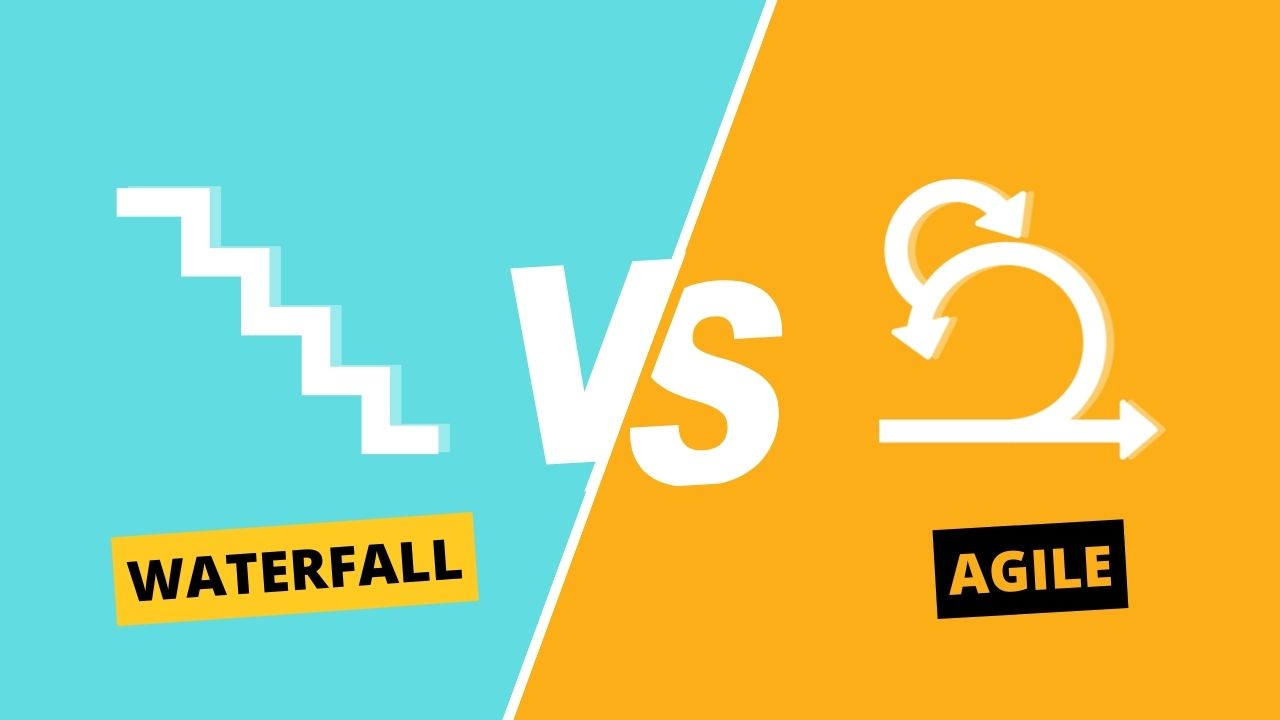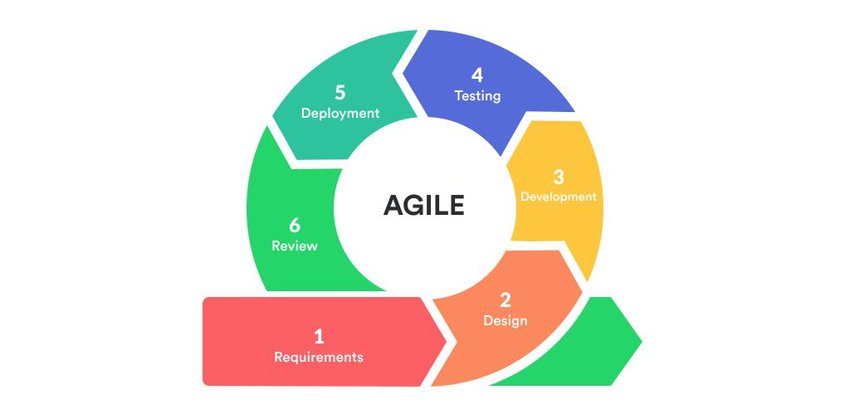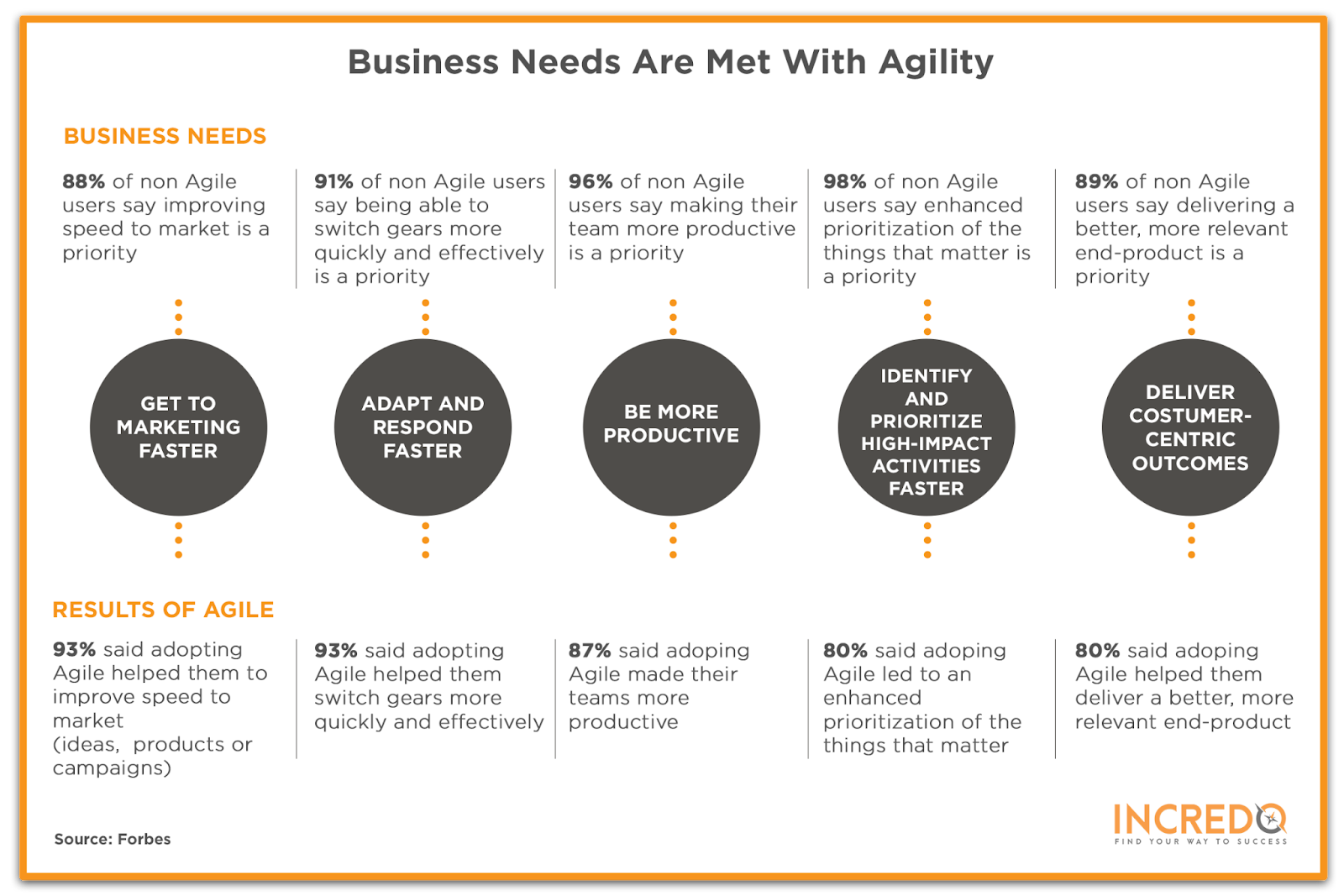In this article, I am going to tell you about Waterfall vs Agile: Project Management Methodology for Marketers. so if you want to know about it, then keep reading this article. Because I am going to give you complete information about it, so let’s start.
Digital marketing teams can take advantage of project management methodologies to optimize their workload. The question is what methodology should they use and how?
Project management methodologies are typically divided into two distinct groups: waterfall and agile. The waterfall is the standard project management framework used for decades for typical projects. However, because of its rather linear structure, it might have some shortcomings for digital projects and digital teams.
Agile is the term that describes a number of modern project management methodologies that escape linearity and can be more malleable to modern digital projects. The agile manifesto is first devised by a group of software developers as a project management framework that meets their special needs.

Today’s article focuses on the same,i.e, “Waterfall vs Agile: Project Management Methodology for Marketers” The articles entail each bit of information necessary for you to know.
Let’s get started!✨
Table of Contents
Waterfall vs Agile: Main difference
Waterfall project management methodology emphasizes a linear order of a project’s development. First comes gathering customer and stakeholder requirements. Then you set a structure to follow throughout the project. Like the flow of a waterfall, each stage will be fully complete before moving on to the next step.
On the other hand, Agile methodology welcomes uncertainty and change with open arms. With a flexible approach, Agile emphasizes getting instant feedback to adapt to emerging changes. It involves a set of project management methodologies like Scrum, Kanban, and Lean.
So, which is the best for digital marketers? Let’s see what their differences mean in a marketing project.
1. Planning
Both methodologies involve a planning phase but differ in their approaches to it.
Waterfall planning is upfront and extensive. With proper analysis of requirements and resources, it offers highly accurate estimates of timelines and budgets.
Pre-set deadlines and fixed budgets make it easy for project managers to have control over the project. And naturally, high levels of predictability and managerial control help please stakeholders and customers.

Agile planning is flexible so that projects can successfully navigate change and uncertainty throughout their course. There’s an initial plan in place, but people who are executing it can modify the project scope when they see fit.
When a project poses a challenge to your team, Agile methodology encourages iteration. Say a technology or method proved to be inefficient after you’ve started a project. Your team will have the freedom to replan its use or replace it with an alternative. Or to at least, suggest solutions.

💡
| So in Waterfall, the focus is on a well-thought-out plan that leaves little room for risk. On the other hand, agile planning focuses on the capacity to adapt, since some projects call for flexibility of their complex nature. |
2. Product delivery
The two models also differ in their approach to project deliverables.
Waterfall project management puts great emphasis on specific deliverables at the end of each project stage. When your team hits those deliverables, they can move on to the next phase.
A Waterfall roadmap defines deliverable products from early on, so you don’t have to seek consensus again throughout the project. Since sequential workflows are easily traceable, PMs don’t have difficulty tracking project success.
Instead of a fixed set of deliverable products, Agile allows adjusting deliverables on the go. The end result, as well as the deliverables, can transform based on the changing conditions.
Agile teams divide tasks into power sessions called sprints. Sprints are defined periods of time, where the team works on one big goal. After each sprint, the team prioritizes the list of deliverable products based on stakeholder feedback.
The need for constant iteration may carry risks, but some projects are inherently dependent on changing variables. In those instances, it’s necessary to reassess deliverables on a regular basis. Digital marketing is dependent on the results from various tools such as lead management software. Thus requirements and objectives for a campaign are more prone to change based on the results achieved.
💡
| In sum, the Waterfall methodology sticks to the initial consensus. It makes it easy for the team to follow their project roles, and for the PMs to monitor compliance with the pre-defined deliverables. On the other hand, Agile allows PMs to revise requirements and better position when priorities change. |
3. Customer collaboration
The trickiest part of project management is balancing all stakeholders’ expectations. And customer collaboration is crucial to finding that balance. Let’s see how two methodologies involve customer collaboration in project management.
Waterfall methodology seeks customer collaboration during the ideation phase. PMs, understand customer needs and expectations through and through before moving on to planning. Building 1-to-1 communication channels with customers during this phase is a critical success factor.
The Agile model encourages and relies on the continuous involvement of customers and other stakeholders. That’s why an essential part of Agile project management is collecting quick feedback at each stage. Feedback can come through surveys, phone calls, live chat, emails, interactive flipbooks, or project management tools like Jira.
💡
| In the Waterfall method, customer involvement largely takes place in the conceptualization phase. It relieves PMs from the burden of continuous customer interactions in the later stages. Agile, on the other hand, prioritizes collecting customer feedback at each phase. It offers more flexibility and requires continuous communication with customers. |
4. Responding to change
One key difference between the two methodologies is how they respond to change.
In Waterfall, all stakeholders discuss project requirements and needs during conceptualization. They sign and seal an agreement on the project scope.
But any seasoned PM knows that sometimes, those initial assumptions may turn out inaccurate. Or, some external change can alter the project scope entirely. And testing in Waterfall comes at the later stages of the project. Meaning, Waterfall doesn’t offer you much flexibility in navigating change.
In its design, Agile offers you maximum freedom and flexibility in running your marketing projects. It breaks projects into individual deliverable pieces. And it welcomes deviations from the project path.
The Agile approach emphasizes testing through each phase of the project. When you see fit, you can change a project’s design, structure, requirements, and deliverables along the way. Using specialized tools such as task management software can make this process easy and manageable.

💡
| Waterfall offers greater predictability and minimum risk. But in dynamic environments, it may fall short of providing the level of adaptability necessary to manage change. Agile methodology highlights change as a core element of project management. Its design is inclusive of uncertainty and adaptability to evolving conditions. |
Which one is the best for digital marketers?
So far, it’s clear that the two methodologies have their own advantages and disadvantages. To name a few:
| Waterfall | Agile | |
| Pros | – Reaching consensus with stakeholders and team on the project timeline and deliverables from the start- Higher accuracy in the timeline and cost estimations- Uninterrupted focus on fixed project roles | – Adaptability in design, structure, requirements, and deliverables- Constant testing for greater efficiency and resourcefulness – User-friendly products with the help of constant customer feedback |
| Cons | – Risks of unrecognized external change- The lack of adaptability in face of roadblocks- Last-minute testing | – Entire team’s full commitment to the project- Lower accuracy in cost and timeline estimations |
By and large, digital marketing projects take place in a dynamic environment. And the digital landscape is crowded and transparent. That’s why digital strategies must almost constantly evolve with the changing competitive landscape.
In most cases, the Agile approach seems to be the better fit for digital marketing projects. Suppose a senior manager assigned you to a social cause project. They ask you to identify a social cause for your brand to stand for. Naturally, one that reflects your brand’s values and differs from other brands. But it also must resonate with customers.
The thing is, a project like this can take months to complete. But the digital landscape and customer sentiment are in constant flux. In the Waterfall approach, you kind of has to ignore those factors once after you start your project.
Agile embraces change with constant testing and iteration. In our social cause case, for instance, you can modify your tone of voice over time to better appeal to your audience. Or, you can discover an entirely different area to invest in, based on strong customer feedback you receive at an early stage. Early feedback can even save you from investing in ideas that can hurt your brand image.
However, neither methodology can fit all projects and environments. If the nature of a project calls for an orchestrated approach, Waterfall can offer you better predictability and risk management. In dynamic environments, Agile can offer flexibility and adaptability to better navigate uncertainty and change.
Read also:)
- What is Advocacy Marketing: A-to-Z Guide for Beginners!
- 5+ Best Referral Marketing Software: A-to-Z Guide for Beginners!
- 10+ Best Tools for Digital Marketing: A-to-Z Guide for Beginners!
So hope you liked this article on Waterfall vs Agile: Project Management Methodology for Marketers. And if you still have any questions or suggestions related to this, then you can tell us in the comment box below. And thank you so much for reading this article.